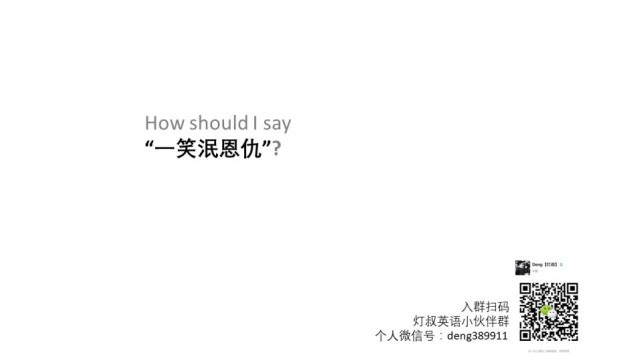2015年政府工作报告学习笔记(21)
中高速增长 a medium-high-level growth rate
迈向 move toward
把握 Keep in mind,有点儿类似“立足” 的译法“ take into full consideration ”(我们还要立足中国的基本国情 We will take into full consideration China’s realities)。
把握、立足、迈向,这类词比较书面,意思上稍有曲折,需要根据具体语境灵活选择词义,如果水平有限,翻译时只能牺牲一部分原有的雅致,比如 move on,其实并不能体现迈向的豪迈。不过,只要用得准确,换用更具体、更有力度词当然是更好的。
“中高端水平”,后面有增译的成分 development,也就是中高端水平的发展。所以翻英文之前,翻译和“修改”中文也很重要。
稳政策,是说保持政策稳定,具有一定的连贯性和一致性,所以是 maintain policy continuity,后面的稳预期同理,换用了 stable。
“打造大众创业、万众创新和增加公共产品、公共服务双引擎” ,这句可算是标本式的公文例句,一般往往是取头尾,中间用 to 或者其他词引导,而不是用 of 之类的词组成偏正短语结构。
大众创业、万众创新 popular entrepreneurship and innovation
公共产品 public goods
“产品”、“物资” 这类词其实有时候不太好翻,含义太广,反而选词容易进陷阱。和上面讲的“把握”等动词同理。
连接两个部分,用的是 pair with,避免了 and 满天飞,这个也可以学习借鉴。
增加公共产品、公共服务,用到的还是谓语动词转换,因为英语句子不能动词太多。
This will ensure that,这种增补成分也很常见,类似的还有 That will mean,This will prevent,That is how······经常用在中文长句英译的第二个小句,说明目的或解释用途。
减势 weaken momentum (momentum 势头)
量增质更优 growth in quantity is underpinned by greater quality,这句感觉一般人很难译出这个水平,underpin 是支撑; 加固,句子的意思类似锦上添花的感觉。值得借鉴的是,类似的 "而"、“且”、“更”这种,表面上是并列关系,实际上翻译时可以适当转换成更灵活的逻辑关系,避免总是 while,and。
thereby 和上面的 This will ensure that 很类似,只不过这里不再另起一句。这两种处理方式很常用,和公文的行文习惯有关系,韩刚老师在90天系列里也都讲过。
中文结构“三步走” :
主要是指涉及政府外宣类题材的句子结构划分技巧。所谓“三步走”,具体是指:中文长句中,第一步给出理念、指导方针或原则,第二步具体阐述在这种方针原则的指导下都做了什么或者要做什么,第三步给出结果或者要实现的目标。在具体行文时,可以按照“每一步”信息的多少进行“逐步”切句或者灵活整合。
■ keep the increase in the CPI at around 3%;
■ create over ten million jobs in urban areas;
国内生产总值 the GDP (冠词)
居民消费价格涨幅 the increase in the CPI (注意两个定冠词)
左右,大约 approximately / around
新增 create (也就是创造)
城镇 urban areas
以内,很容易习惯性套用 within,但译文的 does not rise above 4.5% 更加贴切。这也是一个翻译时可以用的思路,正面不好翻译的时候,反着说可能更容易。
■ achieve a basic balance of payments;
国际收支 international balance of payment; balance of payments
国际收支平衡 equilibrium of balance of payments
居民收入 personal incomes
能耗强度 energy intensity
"主要污染物排放继续减少",这里有语序的调整“继续减少主要污染物排放”,目的是和前面形成一致的主语,避免混乱。下降、减少,这类词,翻译时也非常灵活。
步调一致 in step (They were walking in step.他们步伐一致地走着.)
与······同步 in step with / in line with / in accordance with
我们必须随着银行扩张的步伐扩大外汇储备
we must enlarge the foreign-currency reserves in step with the banks' growth











